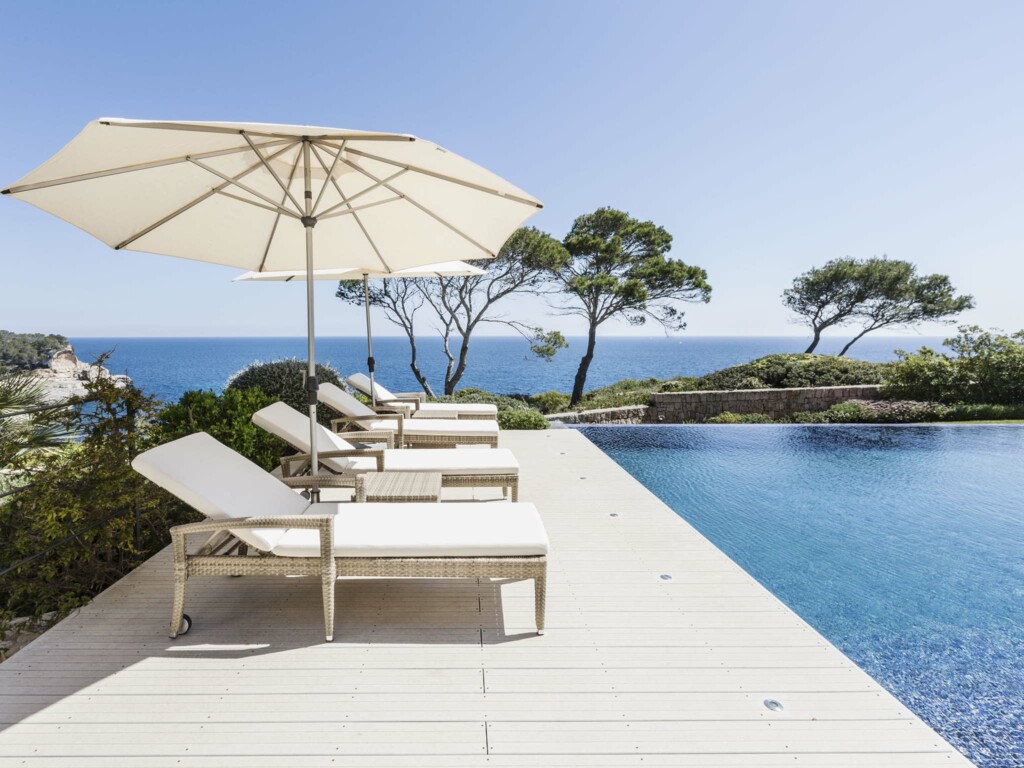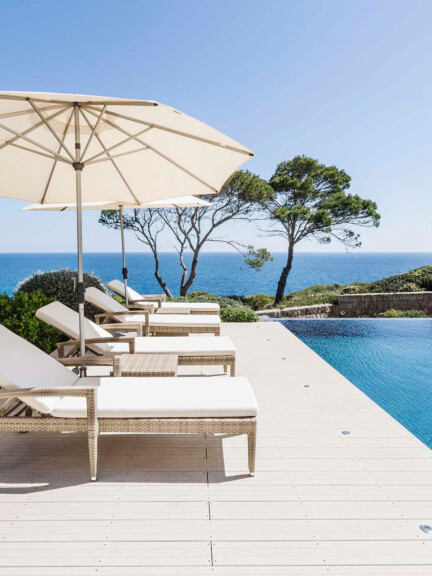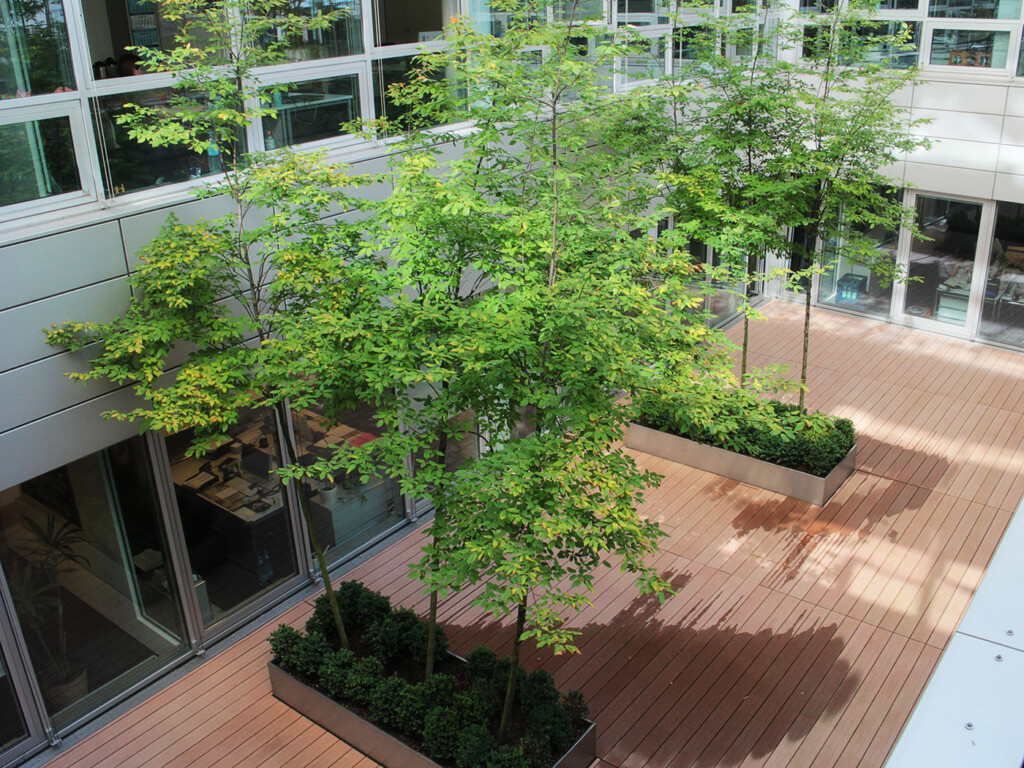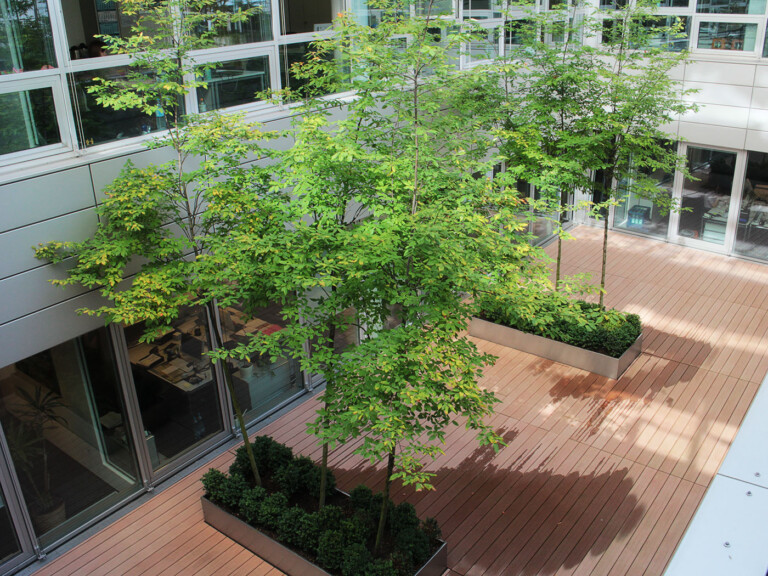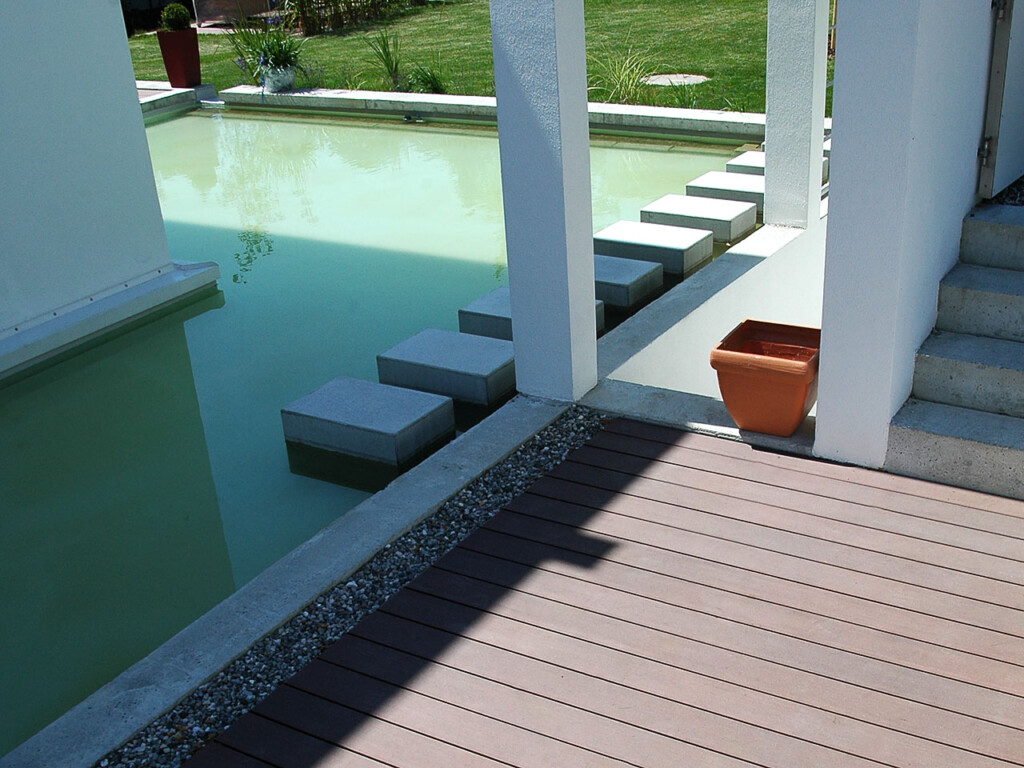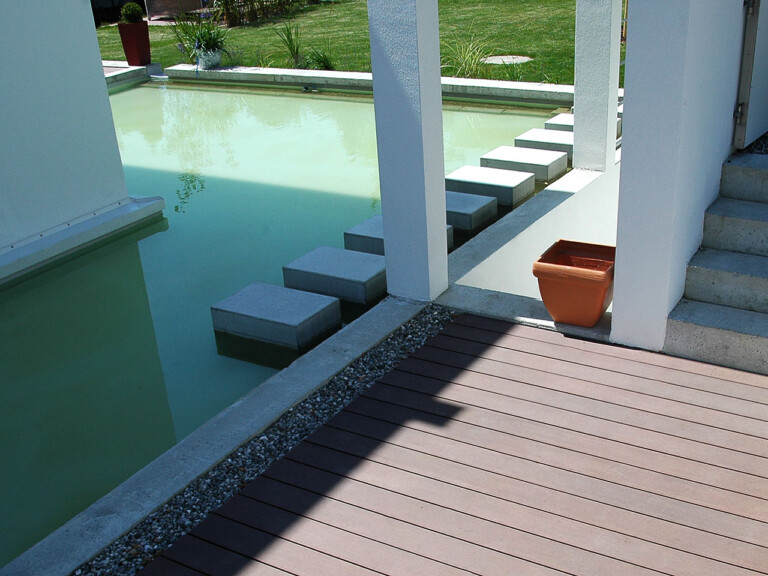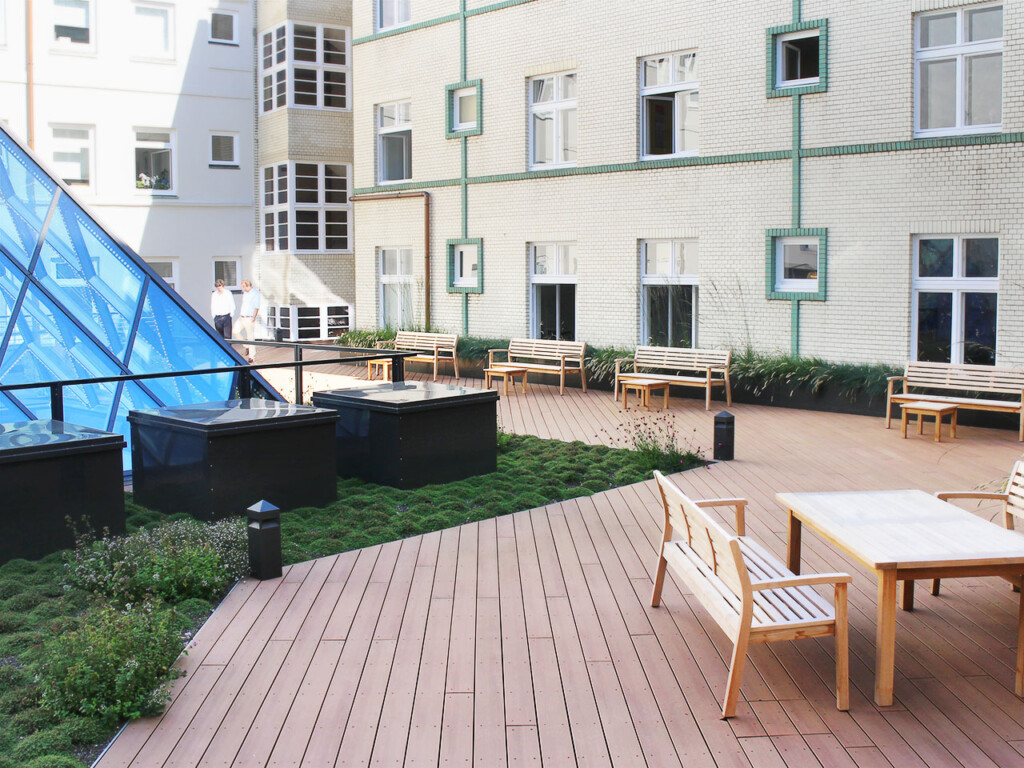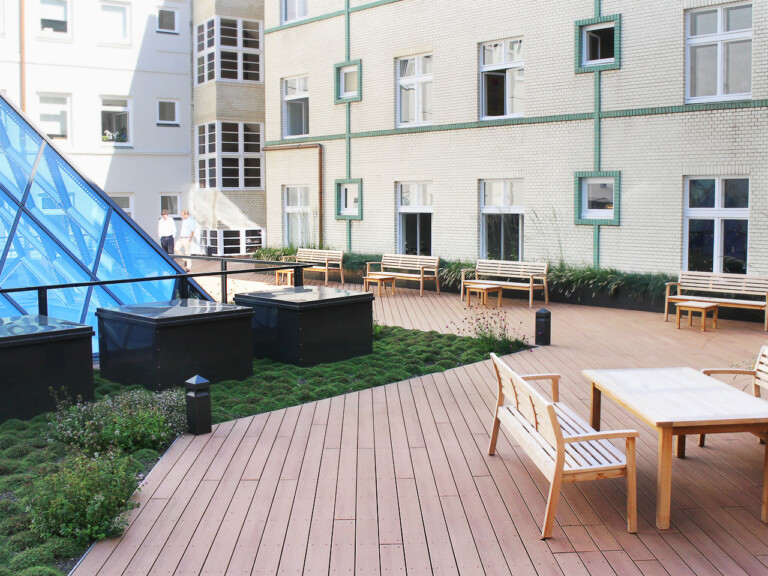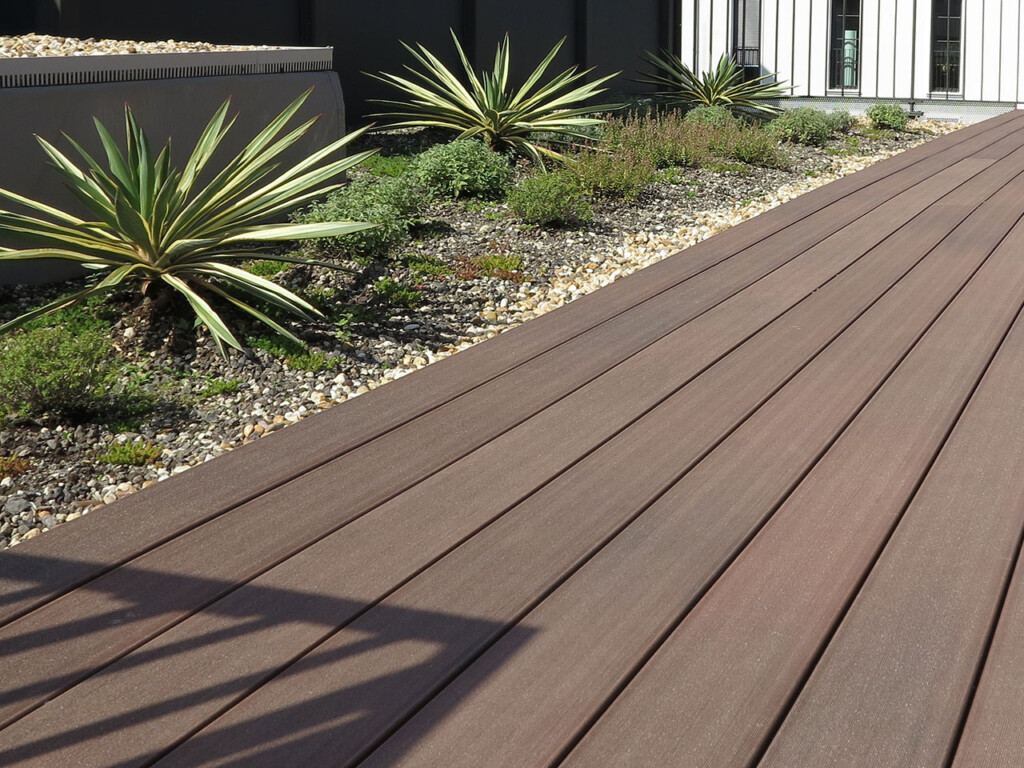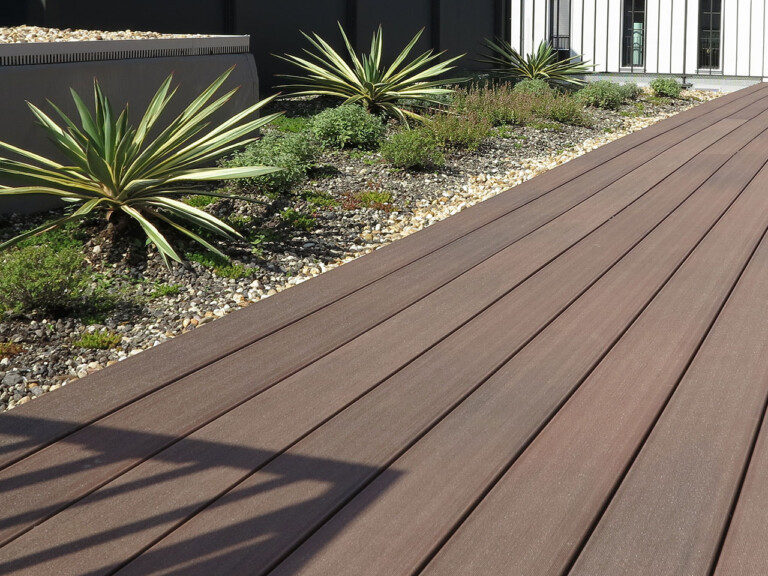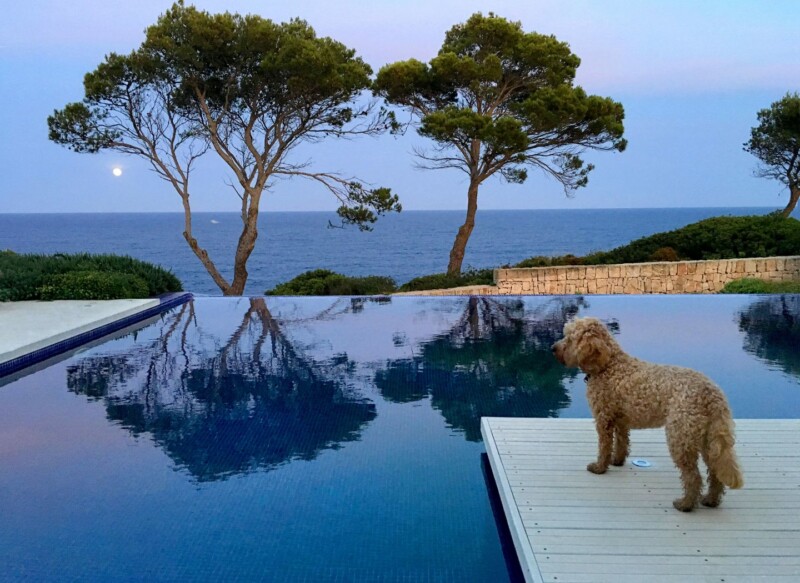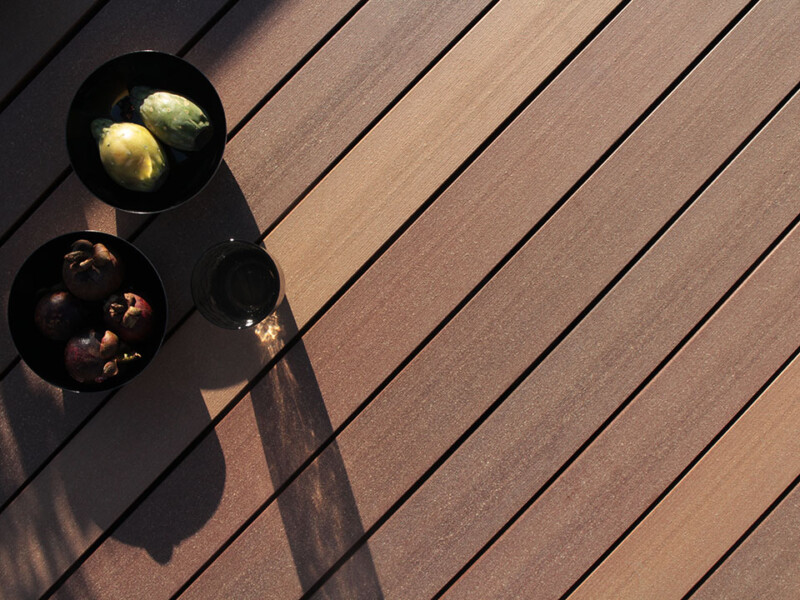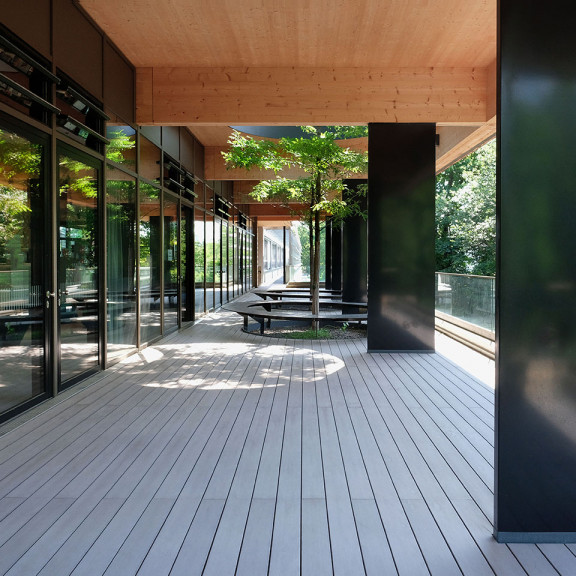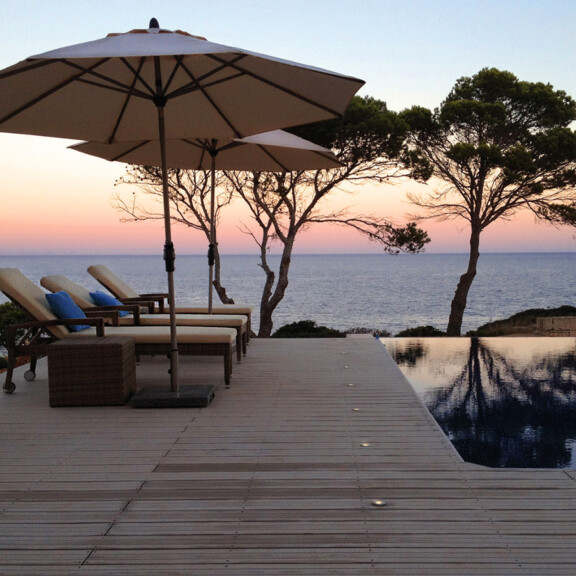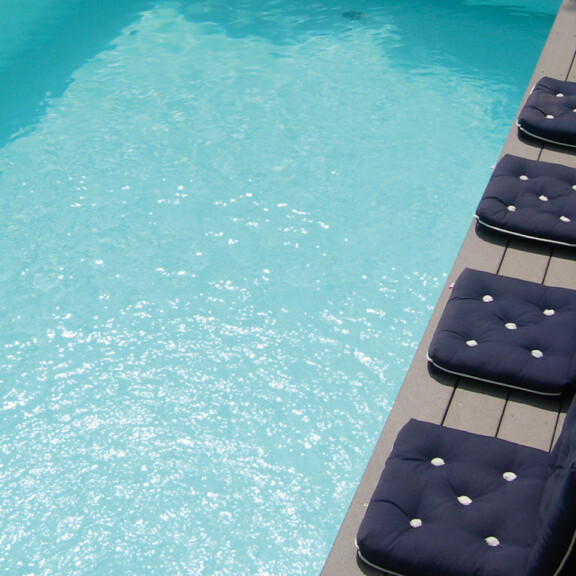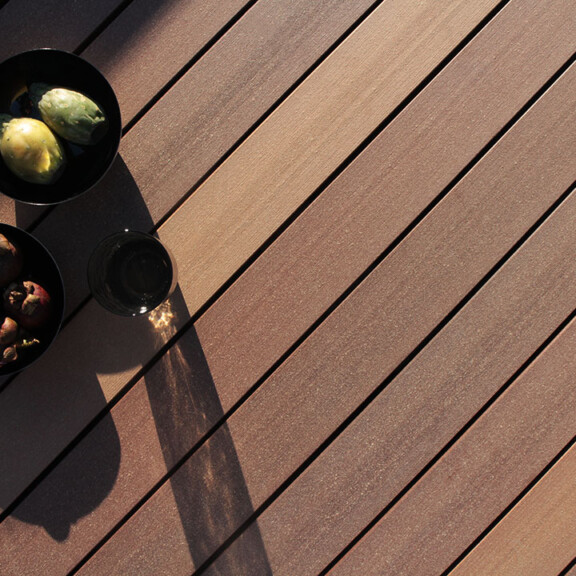Water stains – how they develop and how they can be eliminated
Various things can cause water stains or water marks. During the acclimatisation period, such water marks can occur more often due to leaching of wood elements. As the Premium WPC decking boards contain wood, you cannot avoid this effect. This natural leaching process is not a quality defect and decreases significantly after the acclimatisation period.
Of course roof overhangs, for example, can also cause water marks. In places where water dries off more slowly, dirt marks can appear. In order to avoid the formation of water marks, it is recommended to have an incline. In general, water or dirt marks can be eliminated by cleaning with water. If the stains are more persistent, a soaking time of 30-45 minutes is recommended. You can prevent water or dirt marks by regularly cleaning the terrace.
What should I do in the event of rust, scratches or dents on the WPC decking boards?
The procedure for dealing with damage to the boards is different for the different collections. Small uneven areas with the COLOURS, COLOURS one and COLOURS one wide collections can be carefully sandpapered. Please moisten the Premium decking boards with a little water before working. A slightly sweeping movement is recommended for ideal results. The areas that appear brighter after processing will darken over time and adapt to the rest of the terrace.
What can I use on the WPC outdoor boards in the event of ice and snow?
Sodium chloride or rock salt can be used to melt ice and snow on the premium decking boards. However, when using salt, please note: please only use one the acclimatisation period for the boards is fully complete. In general, the finer the salt, the lower the risk of scratches to the surface.
If handled carefully, a plastic shovel can be used to remove the winter ice and snow.
It is also possible to spread sand [please do not use grit]. Immediately after the winter and after the snow, or ice, has melted, the terrace should be thoroughly cleaned with water.

